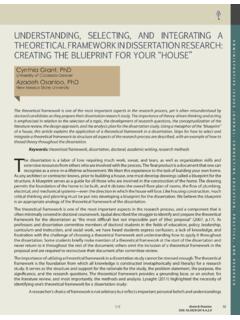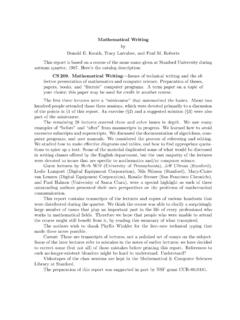Transcription of Sample Proposals - Alan Weiss
1 Sample Proposals The following samples don t rigidly adhere to this format, but all of the ele-ments have been agreed upon either implicitly or explicitly. They range from the short-term and relatively low-priced, to the extended, relatively high-priced. Some are pure consulting interventions, other include deliverables. None is meant to be Typical Approach Proposals can vary a great deal, and we ve provided examples that cover the range from formal contracts to informal letters of agreement. However, all were based upon previously-established conceptual agreement, and all provide a single fee for the project (or for each choice of yeses). The normal framework for the value pricing proposal should encompass this basic sequence: Situation Appraisal: Summarize and reconfirm the conceptual agreement con-cerning the condition to be improved and the desired state.
2 Objectives: The outcomes expected, both tangible and intangible, quantifiable and non-quantifiable. These should be expressed in terms of impact on the client s business, and sometimes are expressed again in the values category, if used. Value: Either clearly stated or implied through buyer conversations, what is the value of achieving the objectives. This sometimes appears in the objectives category. Metrics: How will the client evaluate success? What are the indicators that the objectives have been met? Simply stated: How would clients know it if they fell over it? Timing: Projects are finite. When do we begin, when do we end, and are there progress measures in between? Accountabilities: What is the client expected to provide (documents, access, administrative support) and what do we provide (focus group facilitation, product, re-ports)? What is the nature of the collaboration?
3 Credentials (optional): Why is Zenger Miller (and you) the best alternative for this client? This is usually already covered during the relationship-building. Sometimes this area includes the credentials of the individuals who will work on the project. Terms and Conditions: What is the fee (including the options) for the project, how is it to be paid and under what conditions? How are expenses to be reimbursed, and what is included and excluded? Acceptance: The sign-off by the economic buyer. perfect. Use them as templates to guide you in creating value-rich, high fee propos-als for your clients. Note that tasks are rarely specified in detail. The what and the outcome are important. The how and the input are up to the experts the consultants. If the project is value-priced correctly, the margins will more than support unanticipated client requests.
4 Sample Proposal #1 Proposal to Assist in Reorganization at XXXXXX Situation Summary You must jump start people so that a new manner of working cross-function-ally in a matrix organization is not merely accepted, but is exploited as a high-pro-ductivity way of life. Although reorganization has not been the norm, there is likely to be resistance, both from those inside and from those outside the new organization. A key factor perhaps the key factor in success is the ownership and appropriate be-haviors of all key managers and exemplars, so that people have the proper leader-ship, and accountabilities will be accepted. The primary transition is from a project-oriented, transient approach, to a pro-gram-oriented permanent approach in managing the business. Standards, measure-ment, tracking, feedback loops and ultimate ownership must be created and em-braced.
5 The process of ownership is central to success. Collaboration in a matrix structure with accountability thrust downward are important goals. Objectives Among the results to be achieved are these key objectives: Managers skills are developed and behaviors are directed toward achieving and exploiting results that the new organization affords. Accountabilities are clear at the individual job (micro) level. Communications flow is rationalized so that people are able to deal within the matrix clearly, easily and willingly. Key exemplars develop and exhibit collegiality that demonstrates support for and participation in the new organization. Group interactions are facilitated and continually honed. Obstacles presented by systems, procedures and culture are identified and removed as appropriate. Methodology/Interventions The assistance in achieving the objectives would include, but not be limited to, the following activities: One-on-one assistance for all key managers in skills and behaviors required by the new organizational relationships.
6 Group facilitation where needed in meetings and cross-functional teams. Group observation and feedback, with recommendations on how to improve the process. Assistance with written communications and meetings, so as to maximize ownership and accountabilities and minimize resistance. Recommendations for procedures, cultural norms ( , meeting types and du-rations) which will remove obstacles and strengthen the matrix structure. Assistance in creating ownership that encompasses standards, measures of success, monitoring means and feedback to those accountable. Observation and recommendations for interactions with non-matrix groups whose adherence to the new system is key to overall success. Attendance at large (off site) and small (on site) meetings to provide feedback on acceptance and recommendations on follow-up actions. Measures of Success We ll know we re successful when the following are manifest: New programs are introduced in a synergistic fashion.
7 Other XXXXXX functions accept and utilize the new structure. People are focused beyond merely getting something working toward getting it working to a degree previously designated which constitutes success. (It s not just running, it s running the way it should be running.) There is group approval, and a lack of cynicism; the programs show multiple sign-offs from diverse team members. Meetings and discussions clearly reveal that others were included and val-ued in the decision making process, and that such inclusion was mandatory for success. Timing I m available to begin working with you this month and, at the moment, the February 23 meeting date is one I can make. I d suggest a 90-day initial phase, after which we d evaluate progress in light of the above and make an assessment as to what further assistance is necessary. Our initial project would therefore begin now and last until April 15.
8 Joint Accountabilities I would work with Cheryl (and anyone else designated) in conjunction with the project so that the interventions I m involved in could be transferred entirely to inter-nal people, if desired. We would jointly make determinations during the initial 90 days as to whether some of the objectives and interventions required more emphasis than others, and/or whether new needs arose that were unanticipated. In that case, we would redirect our efforts accordingly. The fee for the assistance detailed above would be $15,000 per month, payable on the 15th of February, March and April. If you choose to pay the entire amount at the outset, I m happy to provide a 10% reduction in the total fee. Expenses are billed Terms and Conditions My fees are always based upon the project, and never upon time units. That way you re encouraged to call upon me without worrying about a meter running, and I m free to suggest additional areas of focus without concern about increasing your investment.
9 As actually accrued at the conclusion of each month, and are payable upon receipt of our statement. At the end of the 90 days we would make a joint evaluation as to whether to continue the relationship and, if so, under what conditions. Acceptance Your signature below indicates acceptance of this proposal and its terms. This proposal is accepted and forms an agreement between XXXXXXXXXX (you) and Summit Consulting Group, Inc. (we/us/I) as represented by Alan Weiss . For Summit Consulting Group, Inc.: For XXXXXXXXXX: Alan Weiss _____ President _____ Date: January 31, 1995 Date:_____ Sample Proposal #2 Proposal: XXXXXXXXXX XXXXXXX Performance Appraisal Skills Building This constitutes a proposal tendered by Summit Consulting Group, Inc. to assist XXXXXXXXXX XXXXXXX, Inc. in the research , design, implementation and refine-ment of a performance evaluation process which is understood, supported, and effec-tively executed by designated members of management.
10 Objectives The objectives for the project include: XXX management will possess the knowledge to execute performance reviews XXX management will possess the skills to execute those reviews Reviews will be conducted in conformance with company guidelines Reviews will provide useful and honest feedback to performers Performance improvement will be detailed and monitored In achieving these objectives, the following parameters will be met in establishing and implementing the processes: alignment between individual and organizational goals linking tasks to output; that is, focusing on and measuring results seeking competitive advantage; the process must enhance business goals creation of a dialogue between performer and manager participation by and commitment from the performer and the manager simplicity of administration and avoidance of bureaucracy metrics for a process and not an event.








